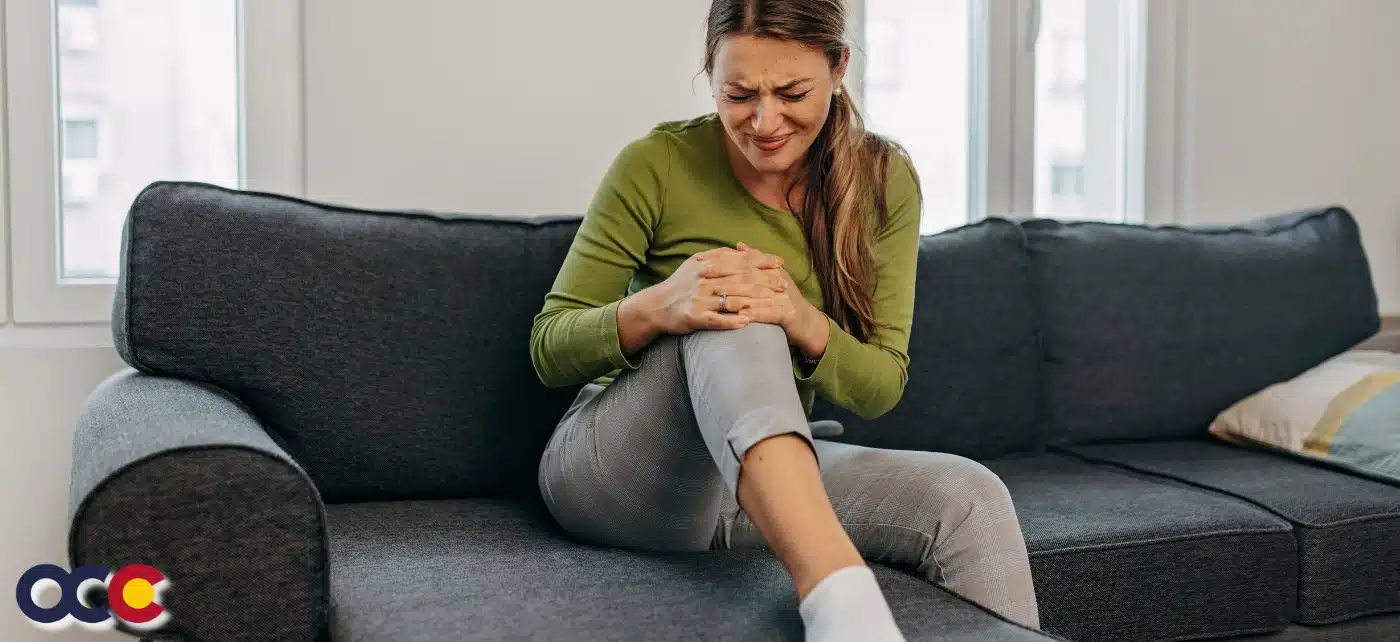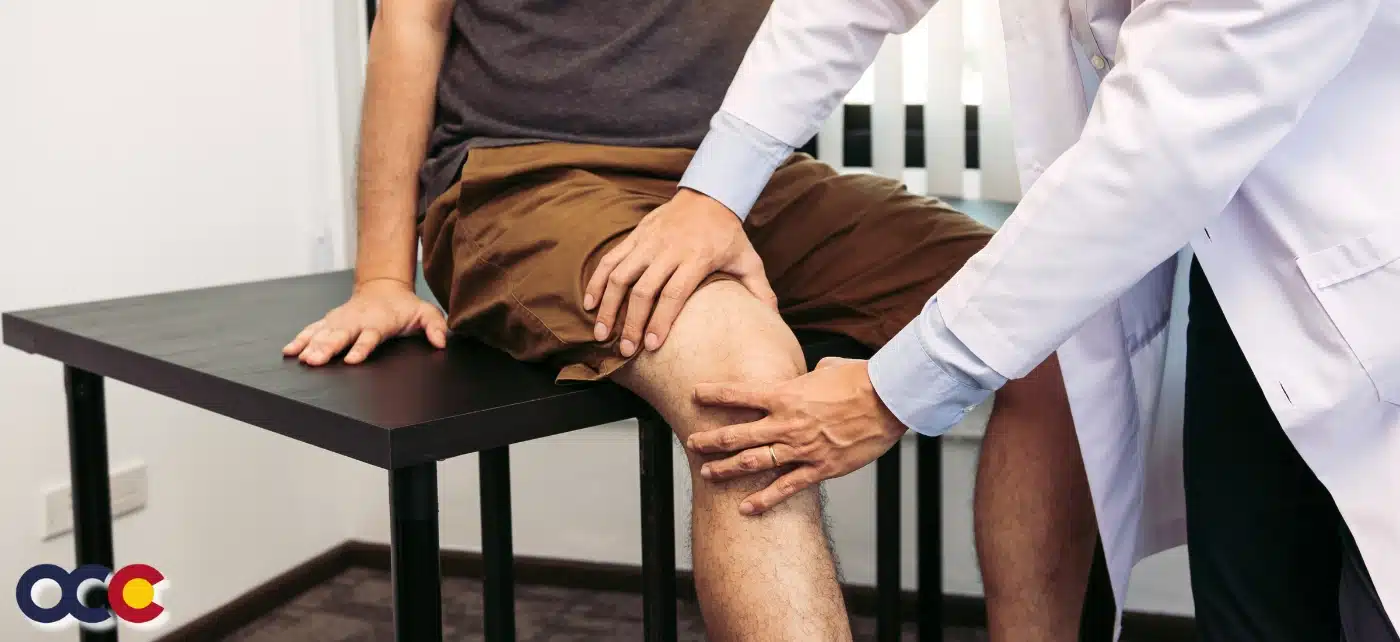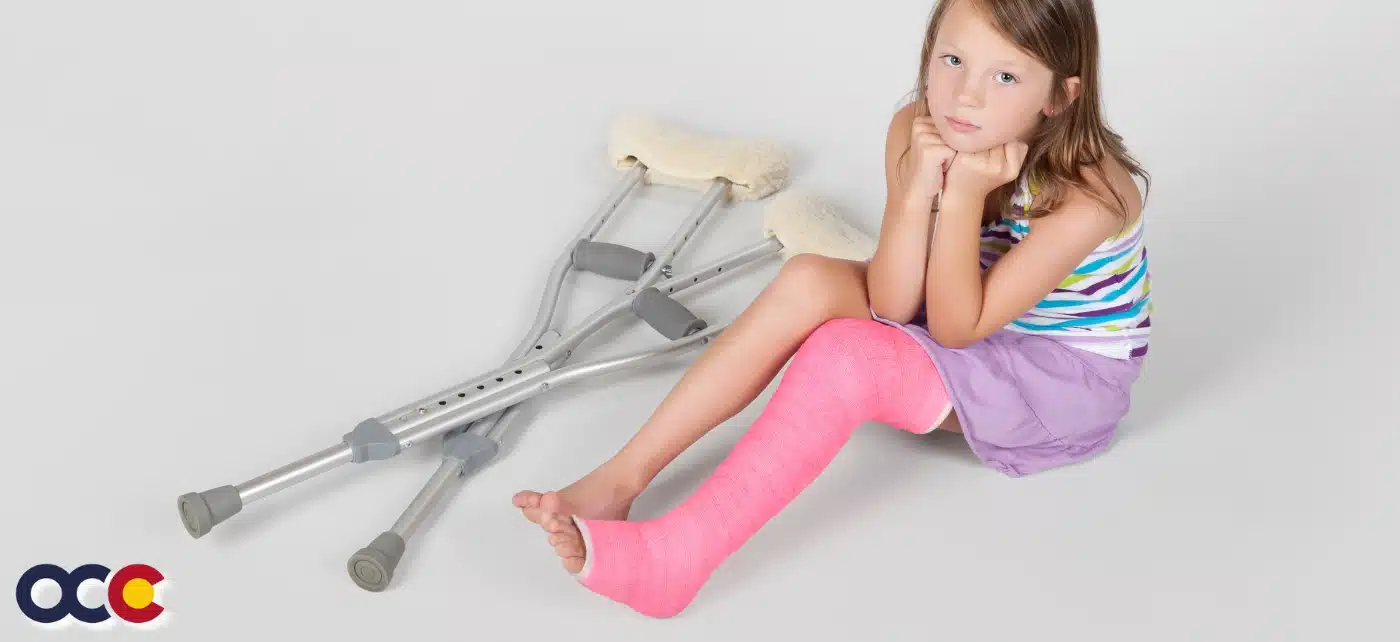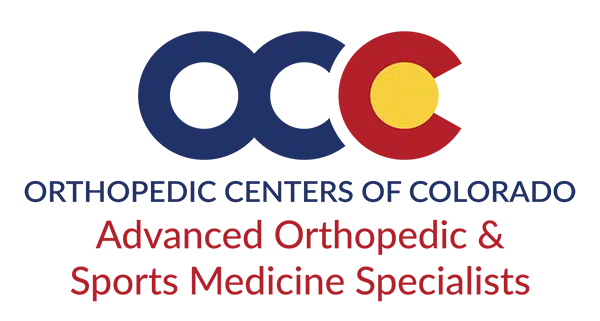If knee pain is keeping you from being active, it’s a good idea to have an orthopedic specialist examine your knee to determine if you have a knee injury. There are several common knee injuries, and diagnosing yours is the first step toward treatment and recovery. We’ve compiled some basic information on the most common knee injuries, so you can go into your appointment with a little background.
MCL sprain: Medial Collateral Ligament (MCL) sprains are the most common type of MCL injury. The MCL runs inside the upper shin bone (the tibia) to the inside and bottom of the thigh bone. This ligament keeps your shin bone in place. MCL sprains typically occur when there is excessive stress or force on the ligament – such as with a ski or snowboard injury – causing it to stretch or tear. MCL sprains are often graded on a scale from I to III, with Grade I being a mild sprain, Grade II a moderate sprain, and Grade III a severe sprain or complete tear.
If you have severe pain or swelling on the inside of your knee – or you are experiencing instability in that area, it could be a sign of an MCL injury. A specialist can assess the extent of the injury and recommend appropriate treatment.
ACL tear: ACL (Anterior Cruciate Ligament) tears also cause pain, swelling, discomfort and typically loss of knee stability. But these issues generally occur on the outside and/or the back of the knee. Like most knee injuries, the severity and symptoms can vary from patient to patient. For patients who have isolated damage and have not lost stability, or young patients with open growth plates, non-surgical treatment or even delaying surgery may be an option.
Even though not every ACL tear requires surgery, the decision to operate depends on various factors including the extent of the injury, the impact on mobility, and the patient’s age and level of physical activity. Complete ACL ruptures often involve damage to other cartilage or ligaments. Considering the ACL’s crucial function in facilitating the knee’s rotation and movement, surgery is usually essential for full ACL tears to give patients the best opportunity for long-term stability and functionality.
Meniscal Tear: There are two “C” shaped cartilage pieces that cushion the joint created by the thigh bone and the shin bone. These are called the menisci. This cartilage can tear if the knee is twisted too quickly or extremely – often with a resulting “pop.” As with other knee injuries, pain and swelling are common, as is reduced range of motion and/or instability.
There are many treatment options for a meniscus tear, again depending on a variety of circumstances, such as age, activity level and severity of injury. Small tears can heal on their own, and surgical repairs may be required for partial or full replacement of a damaged meniscus. This may occur via an allograft transplant.
Patellar tendon tear: The patellar tendon works with your thigh muscles to allow you to straighten your knee. This ligament plays a very important role in the stability and function of the knee joint and even minor tears have a big impact on daily life, likely limiting your ability to walk. Patellar tendon tears are most common among athletes who jump frequently, such as those who play basketball and volleyball.
A major patellar tendon tear is typically a pretty debilitating injury. A major tear almost always requires surgery as well as a robust physical therapy program to restore range of motion, stability and function.
These four knee injuries are among the most common, but far from a complete list. The knee is a complex joint and treating knee injuries successfully starts with the right diagnosis. No matter where your knee hurts, the team of knee specialists at OCC’s Advanced Orthopedic & Sports Medicine Specialists can assess your condition and provide you with the information you need to choose the best treatment option for your knee injury. Schedule an appointment today!

















